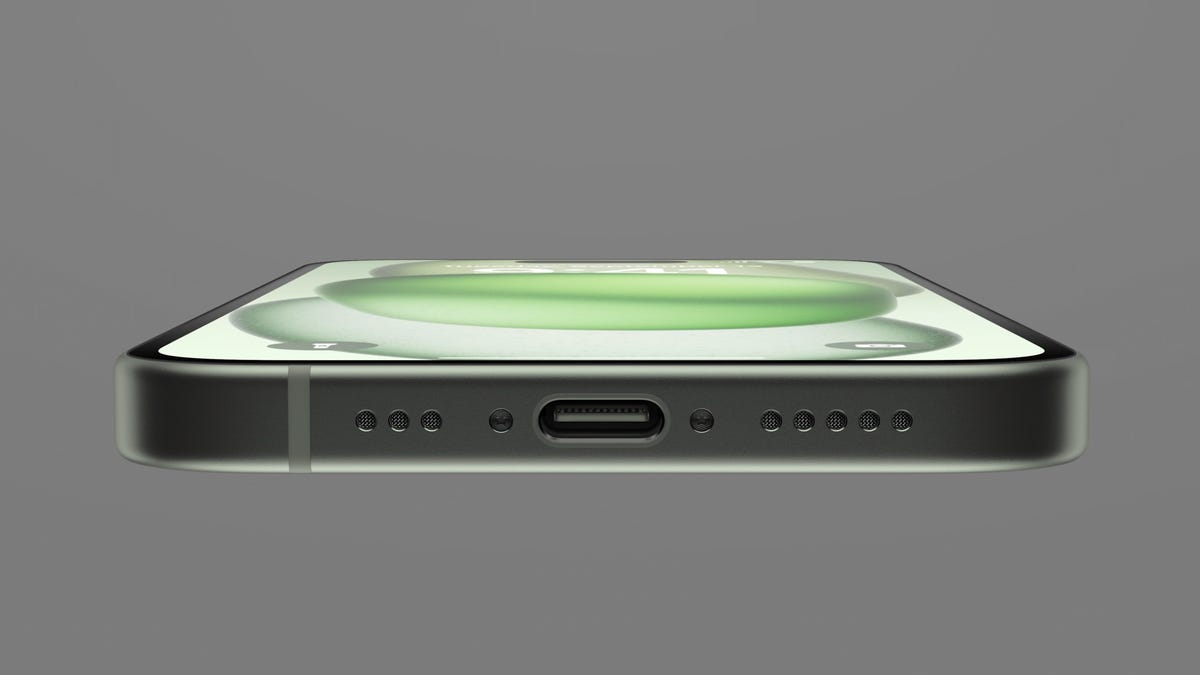 Why You Can Trust CNET
Why You Can Trust CNET The iPhone 15 Replaces the Lightning Port With USB-C. Here's What You Need to Know
There's a new port in place on the latest iPhones, but is it any better than Lightning?

The iPhone 15 line will now include a USB-C port. See ya later, Lightning.
Apple announced its new iPhone 15 lineup at its annual September showcase Tuesday. Among the slew of announcements and performance proclamations was a significant and long-awaited update to the iPhone's design -- namely, a new USB-C charging port on the bottom of the device. It's been a good 11-year run, Lightning port.
The switch brings the newest iPhones in line with countless other phones, tablets, computers and other gizmos that already use USB-C to provide power and wired connectivity. The bad news is that the new iPhones won't work with any of your old Lightning cables (at least, not without an overpriced adapter), but the good news is that there's a reasonable chance you've already got a USB-C cable or two lying around that could fill in. That's kind of the whole idea -- the U in USB does stand for "universal," after all.
So what else should you know about USB-C? Glad you asked.
What is USB-C, anyway?
USB-C has been around for several years now, serving as an updated version of the original USB-A standard. Along with faster transfer rates, the big upgrade with USB-C was a symmetrical 24-pin design, which means that it doesn't matter which side faces up as you plug it in. That's the same design approach as Lightning, so there's no change there for iPhone users.
Is USB-C faster than Lightning?
It can be, depending on what generation of USB specifications the USB-C hardware in question follows. USB-C cables and ports that follow the current-gen, USB 3.2 specifications can support file transfers as fast as 20 gigabits per second, and the upcoming USB 4 specifications could bump that up as high as 120 gigabits per second. Lightning hardware limits transfer speeds at 480 megabits per second, or just 0.48 gigabits per second.
But that's the catch -- the new USB-C port on the iPhone 15 and larger-sized iPhone 15 Plus doesn't support USB 4 or even USB 3.2. It caps things at USB 2 speeds, which limits transfers to... 480 megabits per second. Yep, the new USB-C iPhone 15 has the exact same max transfer rates as all of the Lightning iPhones that came before it.
Go Inside the Apple iPhone 15 and iPhone 15 Pro: See How the New iPhones Look and Work
See all photosIf you want those faster USB 3-level transfer rates, you'll want to be sure to upgrade to the iPhone 15 Pro or Pro Max. Those beefed-up models both include a USB-C port that supports USB 3 transfer rates of up to 10 gigabits per second. So, not the fastest USB-C connection, but still plenty fast for anyone who needs to move large files around, and significantly faster than Lightning. (For anyone who shoots video or backups photos from an iPhone, this should be a major improvement.)
As for charging, we'll be sure to do some tests of our own to see how the new USB-C ports perform, but your charging speeds will always vary based on what you're plugging into. Apple says that you can charge an iPhone 15 from zero to 50% in 30 minutes using a 20W USB-C power adapter (sold separately), which is the same claim that it made last time around with the Lightning-powered iPhone 14. Translation: It's a good bet that charge times won't be much faster than before, if at all.
Are there any other benefits to USB-C?
The main draw here is interoperability, as it'll now be much easier for iPhone users to charge their phone using the same cables that they use for laptops and other devices.
Like the iPhones, the new AirPods Pro 2 made the jump to USB-C.
That includes the new AirPods Pro 2, which also made the jump to USB-C charging at Apple's event. That's a nice convenience, and also a positive development for the planet -- fewer cables in your tech drawer means less electronics waste moving forward.
To that end, if you make the upgrade to a new iPhone and don't need your old Lightning gear anymore, consider giving it away to someone who could make new use of it. The EPA also lists several organizations that offer to recycle consumer e-waste, including Call2Recycle, Earth911, and GreenerGadgets, and retailers like Best Buy will often recycle used electronics as well.

